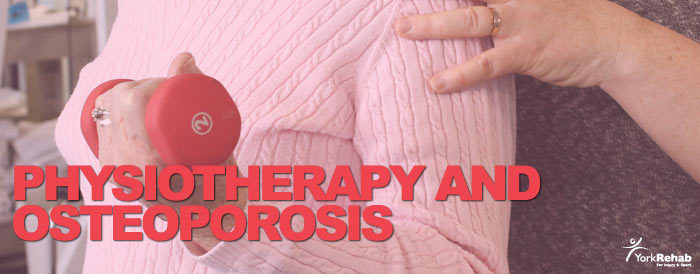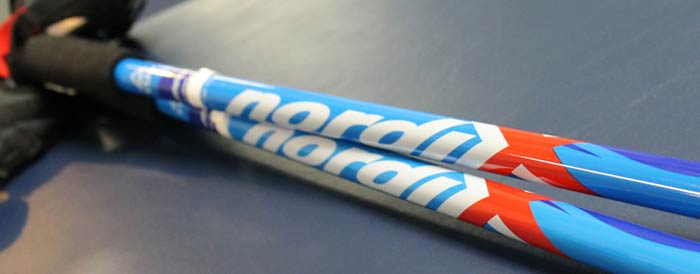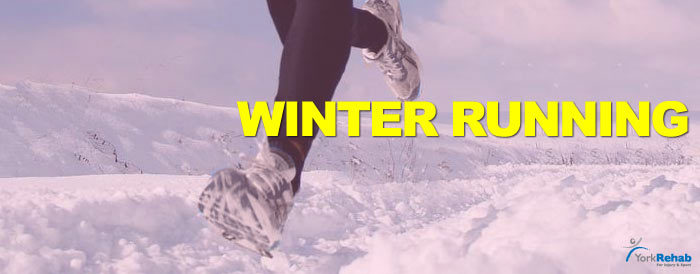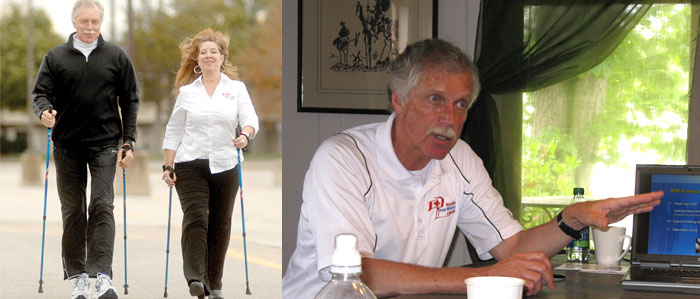Fitness & Excercise
Can Physiotherapy Help People with Osteoporosis?
Osteoporosis is a condition which affects millions of North Americans and millions more are at risk. Osteoporosis, which means “porous bone” is characterized by decreased bone density and structural deterioration of the bone. As a result the bones become weak and brittle. This brittleness can then result in bones that can fracture much more easily than normal. For example, fractures may occur with just coughing or sneezing, bending over, or lifting. The fractures typically occur in the hips, spine, or wrists. Women are four times more likely to develop the condition than men.
In most cases of osteoporosis, the bones weaken when you have low levels of calcium, phosphorous and other minerals in your bones. Many more individuals may have low bone density (osteopenia) and are at risk of developing osteoporosis. Your bone density can be evaluated by a bone density test.
An important factor in decreasing the risk of developing osteoporosis is ensuring your diet includes adequate vitamin D and calcium. And even if you already have the condition, it can help to prevent bones from getting weaker. Exercise, especially weight bearing exercises, in the first two decades of life is the best way to ensure you develop good levels of bone density because as we age our bone density will gradually decrease. So if you don’t have good density to begin with, you are greater risk later on.
Nevertheless, exercising throughout life is an important way to keep your bones stronger. The best exercises include strength training, weight bearing, and flexibility. Strength training consists of using resistance (eg. free weights, resistance bands, weight machines etc.) to build muscles. In particular, the arm muscles and posture muscles. Weight-bearing exercises slow down mineral loss in the bones and include activities such as walking, dancing, and hiking. Flexibility exercises help to maintain joint and muscle mobility and this in turn improves posture as well as balance. Improving balance decreases the risk of falls which can easily cause fractures in osteoporotic bone.
If you have osteoporosis it is a good idea to consult your physician to determine the severity through a bone density test before embarking on any exercise program .A physiotherapist can then assist you to develop an appropriate and safe program. In general, individuals with osteoporosis should avoid high impact activities such as running, and jumping. As well, exercises that involve bending and twisting, such as touching your toes, rowing machines, and full sit-ups, should be avoided as they increase the risk of compression fractures in the spine.
Nordic Pole Walking – Fastest Growing Outdoor Sport
Nordic pole walking is the fastest growing outdoor sport. It is a walking sport that is safe and effective for fitness. Walking with poles is more beneficial than walking without poles. Walking with poles gives you a total body workout. It incorporates more than 90 percent of the muscles in your body. Walking alone uses only 35 percent of your muscles.
Have you tried cross-country skiing? Do you remember how you had an amazing workout? Nordic pole walking is very similar to cross country skiing. You use the same technique but you are using running shoes instead of skis. You can use Nordic poles on any terrain, any place, anytime.
There are many health benefits to using Nordic poles.
- Nordic pole walking burns up to 46% more calories than walking without poles.
- Nordic pole walking improves cardiovascular training.
- Since you are using 90% of your body muscles you also increase the endurance of arm, back, neck, shoulder and abdominal muscles.
- When using Nordic poles you will have 26% less impact on your hips, knees and feet.
- Exercise gives you a feeling of well-being. This will decrease feelings of depression or feeling low.
- Nordic pole walking improves posture.
Activity helps you keep a desirable lifestyle.
We hope you will join us at York Rehab for a Nordic pole walk. All are welcome.
Running in the Winter
Why run in the winter? Current CSEP guidelines recommend adults (aged 18-64) accumulate a minimum of 150 minutes of moderate to vigorous intensity aerobic exercise per week. Recommendations are also made to add muscle and bone strengthening activities at least two days per week.
Running is a great sport to combine all of these recommendations.
Don’t hang up your shoes once the snow starts to fall though -if you’re prepared for the upcoming winter conditions you’ll be able to run all year long!
Pre-run:
- Monitor the weather forecast. Note the wind speed in addition to temperature. The steady flow of cold air can contribute to rapid cooling and subsequent “wind chill”.
- Dress in layers. Use the “Rule of 10” as a guide in choosing those layers -dress for temperatures 10 degrees warmer than that listed. Don’t forget important accessories such as a hat, balaclava, buff and gloves. Technical or quick-dry clothing is best, as they are lightweight, offer warmth without bulk and have effective properties to remove moisture away from the skin. To avoid overheating, you should feel cool as you head outdoors -you’ll feel warm within 10-15 minutes after starting of your run.
- Protect your feet. To increase traction in slippery conditions, you can purchase strap-on grippers which are attached to the soles the shoes you use year-round, or you can consider purchasing winter shoes with water-resistant uppers and deeper treads, or trail shoes. Technical or quick-dry socks can also help to keep your feet warm and dry.
- Make sure you’re lit. With the long nights of winter, darkness ensues. Be sure to include multiple points of reflection and/or light on your outer layers of clothing. View this video demonstrating what a driver sees at night with and without reflection: http://www.youtube.com/watch?v=-5k_AVjtHGA&feature=youtu.be
- Run safe. Run with a buddy or, if you plan to run alone, notify others of your route and your expected departure and return times. Run in a series of loops and have a designated turn-around point should you need to cut your run short or seek shelter. Always run with identification and carry a cell phone in the event of an emergency.
Mid-run:
- Start against the wind. This way you can benefit from the support of the tailwind on the last leg of the run when fatigue often an issue.
- Shorten your stride. It’ll improve your footing with icy conditions.
- Monitor for early signs of frosbite. Frostbite presents as pain with reddening of the skin. With continued exposure to the cold, this leads to the sensation of prickling and numbness.
- Stay hydrated. With lower temperatures, you will feel less thirsty. With less intake of fluids, your risk for dehydration increases. Carry a water belt with you to replenish fluids lost through perspiration and respiration. Tuck your belt under your jacket and you’ll be sure to prevent your water from freezing solid!
Post-run:
- Avoid a chill. After you have stopped running, your heat loss will outweigh your heat production. To minimize this effect, be sure wear a warm jacket until you return home, when you can remove all of your dampened layers of clothing.
- Perform a cool-down. Low intensity activity, promoting functional range of movement is recommended.
Should you require information and recommendations for exercising safely with a variety of health conditions consult a member of our Physiotherapy Team at YRA. For details on beginning a structured running program, visit www.runningroom.com
FREE Nordixx Seminar at York Rehab Newmarket Physiotherapy Clinic
The York Rehab Physiotherapy Clinic in Newmarket hosted a FREE Seminar on Tuesday October 1, 2013 at 7pm.
It was a motivating talk about the benefits of walking and Nordixx pole walking. Guest speaker: The president and founder of Nordixx poles, Klaus Schwanbeck.
Nordic pole walking is walking using 2 poles and it provides a safe low impact exercise. When using Nordic poles for walking you use more muscle groups and burn more calories than walking alone. Nordic pole walking has been proven by studies worldwide to have benefits for various health problems and chronic diseases. The seminar will be lead by Klaus, a leading authority in fitness, wellness and the Canadian Walking Academy. He will discuss the importance of exercise and the benefits of using the Nordic poles with your walking program.
Thanks to all those who attended and bought poles. Happy pole walking! If you would like more information on Nordixx Pole Walking please contact Ann Botham at 905 715-7201 or abotham@yorkrehab.com.









